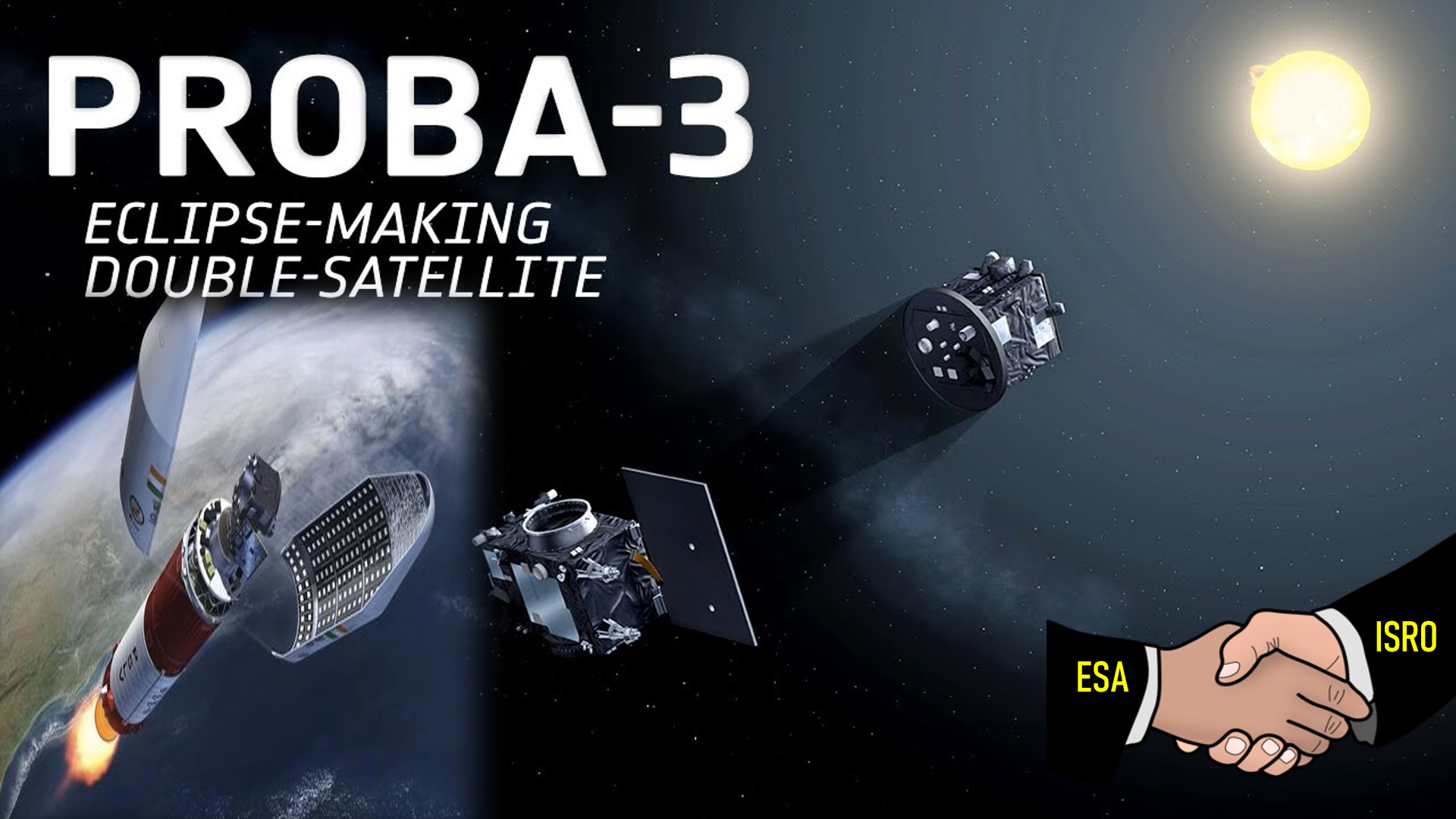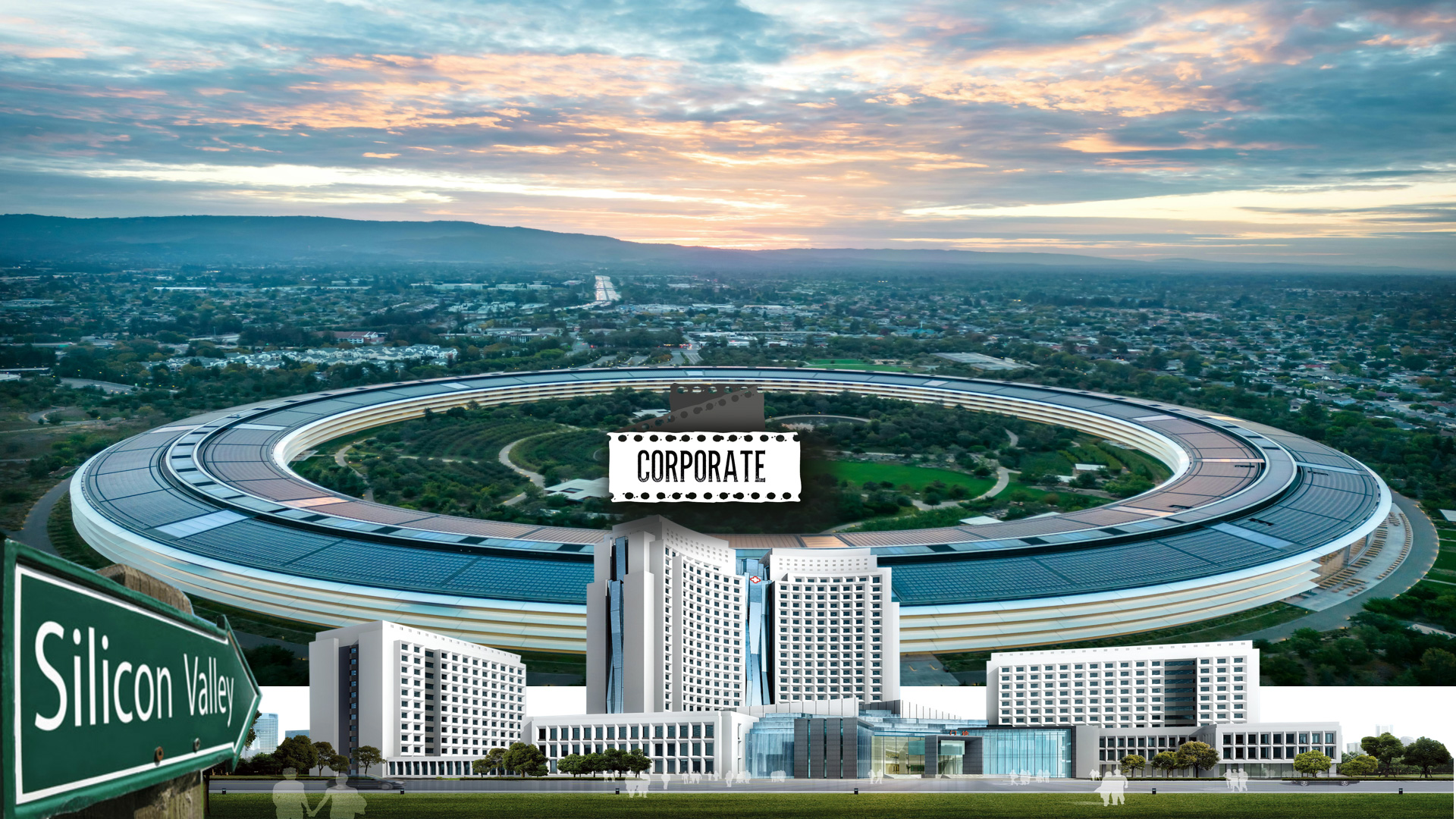ESA’s PROBA-3 Mission - A Case Where ISRO’s PSLV Preferred Over SpaceX’s Falcon 9 | (Thu 05 Dec 2024 22:39)

What is PROBA-3 Mission of European Space Agency?
The PSLV-C59/PROBA-3 Mission has successfully achieved its launch objectives, deploying ESA's satellites into their designated orbit with precision, few hours back. The PROBA-3 mission is a space mission led by the European Space Agency (ESA) designed to demonstrate advanced formation flying technology using two spacecraft flying in precise formation with sub-meter accuracy. The mission's primary objectives are:
- Formation Flying Demonstration: The mission aims to showcase the ability of two spacecraft to autonomously maintain precise relative positions in space, which is essential for future missions that require highly coordinated spacecraft.
- Solar Coronagraph Observation: One spacecraft will carry a solar coronagraph to study the Sun’s outer atmosphere (the corona) in high detail, while the other will act as an occulting disk, blocking the Sun's bright light to allow better observation of the corona.
- Autonomous Navigation and Control: The spacecraft will use onboard sensors (e.g., relative GPS, star trackers) and advanced formation flying algorithms to maintain their formation without reliance on ground-based tracking.
PROBA-3 will be launched aboard ISRO's PSLV and is expected to last for about 2 years. The mission will demonstrate key technologies for future space missions, such as space telescopes, solar observations, and planetary exploration, where formation flying will play a key role in achieving greater precision and efficiency.
Why ESA choose ISRO over SpaceX to launch PROBA-3 Mission?
The ESA's decision to choose the Indian Space Research Organisation (ISRO) over SpaceX for the PROBA-3 mission can be attributed to a combination of factors that include cost considerations, technical requirements, availability of launch vehicles, and long-standing collaborative relationships between ESA and ISRO. While both ISRO and SpaceX are recognized global players in the space sector, ESA's selection of ISRO for PROBA-3 reflects a unique set of circumstances that align more closely with the specific needs of the mission. Below, I will explore these factors in greater detail.
1. Technical Requirements of the Mission
PROBA-3 (Project for On-Board Autonomy) is a formation flying mission designed to demonstrate advanced space technologies. The primary goal of the mission is to test a high-precision, long-duration formation flying system using two satellites, which will fly in a highly controlled and synchronized manner. These satellites will form a precise formation and provide a platform to observe the solar corona. The demonstration of such a technology requires high precision, advanced spacecraft control, and tight coordination between the two spacecraft, making it a highly specialized mission.
2. Launch Vehicle Compatibility
The launch vehicle is a critical component for any space mission. The PROBA-3 satellites have a specific mass, volume, and configuration that determines which launch vehicles can carry them into space effectively. The mission's payload weight and size were well suited to the Polar Satellite Launch Vehicle (PSLV) developed by ISRO. PSLV is a proven, reliable, and cost-effective workhorse for smaller to medium-sized payloads, making it an excellent option for ESA's mission.
ISRO's PSLV is a light to medium-lift rocket and has a long track record of successful missions, including many international launches. Its payload capacity and fairing size made it a natural fit for the PROBA-3 mission. Furthermore, the PSLV has demonstrated a high level of precision and reliability, both of which are crucial for a formation-flying mission like PROBA-3. For a mission that requires precise orbital insertion, such as PROBA-3, ISRO’s PSLV provides an ideal balance of cost-effectiveness, launch performance, and reliability.
On the other hand, SpaceX's Falcon 9, while undoubtedly more powerful and capable of carrying much heavier payloads, is generally better suited for larger missions with heavier and bulkier payloads. SpaceX's Falcon 9 typically handles higher-capacity launches and is priced accordingly. Since PROBA-3’s payload was relatively small compared to what Falcon 9 typically handles, ESA may have found the PSLV to be more economically viable without sacrificing performance.
3. Cost Considerations
One of the most important factors in choosing a launch provider is cost. SpaceX is known for reducing launch costs and revolutionizing the commercial space sector by offering lower-cost options for launching payloads into space. However, the Falcon 9’s cost structure is generally higher than that of ISRO's PSLV, especially for smaller payloads.
ESA, being a governmental agency with a focus on cost efficiency, is often bound by strict budgetary constraints. As a result, even though SpaceX provides excellent reliability and performance, ISRO's PSLV offers a more affordable option for missions like PROBA-3. For smaller missions or missions that do not require the heavy lift capabilities of Falcon 9, PSLV offers a more economically efficient alternative. Given the highly specialized nature of the PROBA-3 mission, ESA likely chose PSLV not only because it met the technical requirements but also because it offered significant cost savings compared to other options, such as Falcon 9.
4. Schedule Flexibility and Availability
ESA had specific timelines and scheduling needs for the PROBA-3 mission, and ISRO's PSLV launch schedule was likely a better fit. SpaceX’s Falcon 9, though highly reliable, has a busy launch schedule and often prioritizes high-profile, larger payloads for commercial and governmental clients. ESA needed a launch provider that could accommodate their desired timeline without compromising mission requirements.
In contrast, ISRO has a long track record of offering flexible launch schedules, particularly for smaller, international payloads. Given the well-established relationship between ESA and ISRO, this flexibility likely played a crucial role in the decision-making process. For ESA, choosing a launch provider with available slots in their desired time frame was an essential consideration.
5. Long-standing ESA-ISRO Partnership
ESA and ISRO have maintained a strong and productive partnership for many years. This relationship has been built on mutual trust, collaboration, and shared scientific and technological goals. ISRO has successfully launched many ESA satellites and participated in a number of joint space missions, such as the Mars Orbiter Mission (MOM) and the Indian-French SARAL mission. This track record of successful collaborations likely influenced ESA’s decision to continue working with ISRO for PROBA-3.
ISRO’s collaboration with ESA has not only been technical but also political and diplomatic. The selection of ISRO as a launch provider for PROBA-3 helps to strengthen the relationship between India and Europe in the context of space exploration. The Indian space program, under ISRO's leadership, has made remarkable progress, and supporting India’s growing space capabilities aligns with the broader goal of international collaboration in space exploration. By working with ISRO, ESA further reinforces its commitment to supporting emerging space powers while fostering a global network of space research and development.
6. Reliability and Proven Track Record
The PSLV has established itself as one of the most reliable and cost-effective rockets in the world. With over 50 successful launches, it has become one of the most trusted launch vehicles in the global space community. It has demonstrated an excellent track record for missions with small to medium-sized payloads, making it a logical choice for ESA’s PROBA-3 mission, which requires precision and dependability.
While SpaceX has also built a strong reputation for reliability with its Falcon 9, particularly in the commercial space sector, PSLV’s decades-long history and demonstrated success in launching a wide variety of missions, including formation-flying satellites, likely made it a safer bet for a mission that demanded high precision and long-term mission success.
7. Strategic and Political Considerations
The selection of ISRO also reflects the strategic interests of both ESA and India. Space exploration is often as much about geopolitical diplomacy as it is about technology. ESA’s decision to work with ISRO on PROBA-3 strengthens the partnership between Europe and India, two regions that have become increasingly important players in space research and technology. Additionally, working with ISRO allows ESA to maintain strong ties with one of the fastest-growing space agencies in the world.
Furthermore, by partnering with ISRO, ESA also helps to support India’s growing space program, which has rapidly advanced in recent years and now includes a broad range of capabilities. These partnerships can provide mutual benefits in terms of technology transfer, joint research, and future collaborative missions.
So we can say, the European Space Agency’s decision to choose ISRO over SpaceX for the PROBA-3 mission was driven by a combination of technical, economic, strategic, and political factors. ISRO’s PSLV was an ideal match for the mission’s payload size and requirements, offering a cost-effective and reliable solution. The long-standing partnership between ESA and ISRO, combined with the cost advantages of using PSLV, made ISRO the preferred launch provider. Although SpaceX offers high-performance rockets like Falcon 9, the specific needs of the PROBA-3 mission—ranging from cost to launch schedule and technical compatibility—aligned more closely with ISRO’s capabilities. This decision underscores the importance of selecting the right launch provider based on the unique requirements of each mission.

Physics, Chemistry, Biology and Geography.

Computer Programming, languages & their frameworks.

Economics, Accounts and Management.

Reviewing old and new books.

Ancient, Medieval, Modern, World History.

Indian Constitution, Politics, Policies, etc.

Everything related to International Affairs.

For all humanities topics, except History & Polity.

Anything related to entertainment industry.

Mainly Cricket but other sports too.

CS, IT, Services & Corporate Sector.
Comments
No comments yet. Be the first to comment!
Leave a Comment